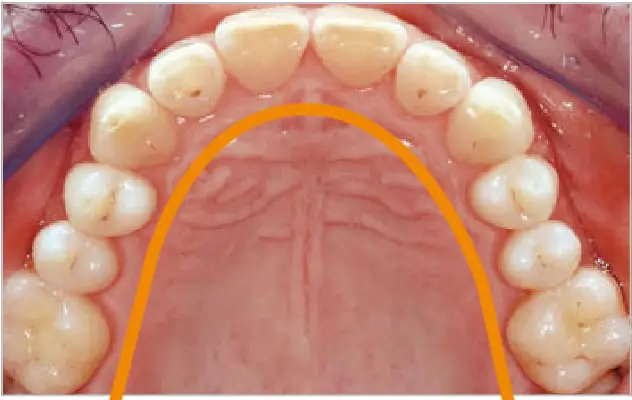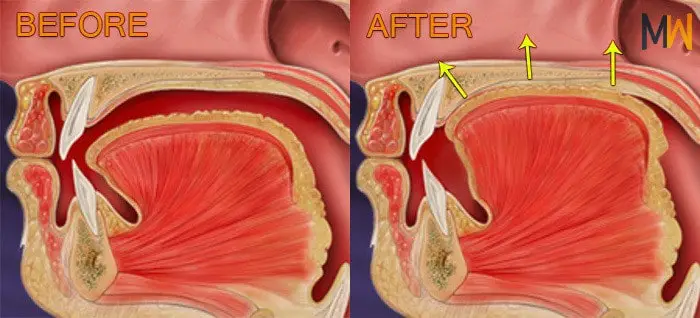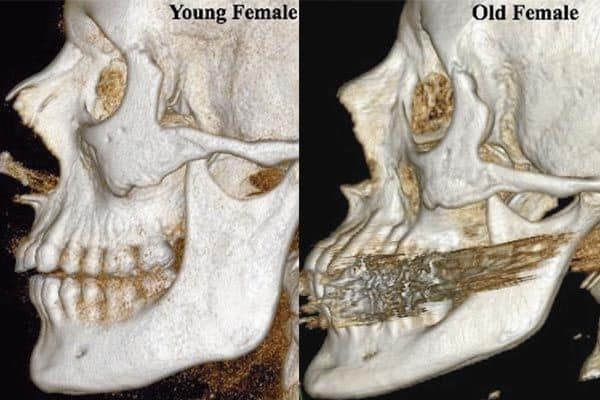
Many people who know the basics of mewing know that they need to keep their tongue flat on their palate, but there are different schools of thought on how hard you should press.
Soft mewing requires only as much force as is needed to have the whole tongue make contact with the upper palate. It doesn’t require pressing any harder. On the other hand, some people believe that “hard mewing,” which needs more force, gives quicker results. The downside of hard mewing is it could lead to asymmetry or pain.
The Pros and Cons of Soft Mewing
Soft mewing is when you apply just enough pressure to your palate with your tongue to keep it rested and flat. You will not feel much strain on your tongue. You may feel some strain during the first few weeks, but it will feel more comfortable after soft mewing for a few weeks.
The force you use should be comfortable and light when you try “soft mewing.” It should only really just be enough force to get your tongue on the roof of your mouth. The light force is usually more than enough to get the results you want, especially if you are still young.
The idea behind soft and light pressure against your palate is that it will slowly guide your midface. It will help make your midface move up and forward over time. Mewing does not happen instantly. Plus, most people swear by soft mewing because they see results as quickly as four months in the neck/hyoid musculature.

There are no real cons to soft mewing since it is just normal tongue posture. As long as you do it the right way, you should not have any issues.
For instance, some people complain that the tip of their tongues hurts when they mew. However, that is usually because they are pushing their tongue outwards, not upwards.
Plus, your tongue should not touch your teeth when you mew correctly. So, the solution is to readjust your tongue, so it does not touch your teeth. It would be best if you also focused on pushing your tongue upward and more to the back of your palate.
If you want to learn how to mew correctly, see our guide.
The Pros and Cons of Hard Mewing
Hard mewing is when you press your tongue on your palate using as much force as possible. While you should not completely strain your tongue while you do this, you will still apply as much pressure as possible, taking periods of rest to go back to soft mewing.
There is a lot of debate about whether hard mewing is good or bad. Some people claim they got new asymmetries and others got good results after a few years (about the same time as soft mewing).
So, why do some people advocate for hard mewing? Some people state that they get much faster results when they try hard mewing. The logic behind the theory is that you speed up the midface’s movement by using more force.
Most people will notice that their tongue feels strained very quickly with hard mewing. While it may not be painful per se, you have to take frequent breaks.
However, if you feel pain when you try hard mewing, you should stop right away. You would be better off trying soft mewing and waiting longer for results to avoid injuring yourself.
There is no hard evidence to support that hard mewing truly works. Some people post progress results, which show that they got excellent results with hard mewing. However, it is hard to say if they got results because they tried hard mewing or simply that they mewed in the first place.

Additionally, Dr. Mew himself does not fully endorse hard mewing, as seen in this video. Hard mewing is much newer than soft/standard mewing, so there is little evidence for him to endorse it.
Dr. Mew has also mentioned that he believes that time is more important than force. Based on that statement alone, it could mean that the energy you use for hard mewing may not be worth it. But it’s also possible that pressing hard trains your nerves and causes you to be able to keep your tongue on the roof of your mouth longer than you normally would.
Should I Try Soft Mewing or Hard Mewing?
If you want to stay on the safe side, then soft mewing might be your best bet. Ideally, people under 18 years old should not hard mew. Since their bones are very malleable and still developing, they do not have to hard mew. They can get great results from soft mewing.
However, there is no age limit to soft mewing. While adults can try hard mewing, you can do soft mewing at any age. You do not have to try hard mewing if you are above 18 years old, especially if you do not want to try it. Bones change as you age, so soft mewing regularly should work (Nasabian et al., 2017).
Therefore, you should be able to try soft mewing no matter how old you are. Take a look at this photo of an aging skull.

You can encourage upward and forward growth as you age with soft mewing.
Soft mewing may be best for most people, especially since it is the normal way to mew described by Dr. Mew. However, you can enhance your soft mewing technique if you want to try getting quicker results.
Soft mewing with a suction hold could help you get better results fast. When you do the suction hold, you create a vacuum between your hard palate and your tongue. This is by far the easiest way to do soft mewing.
Click here to learn more about the suction hold and how you can do it.


